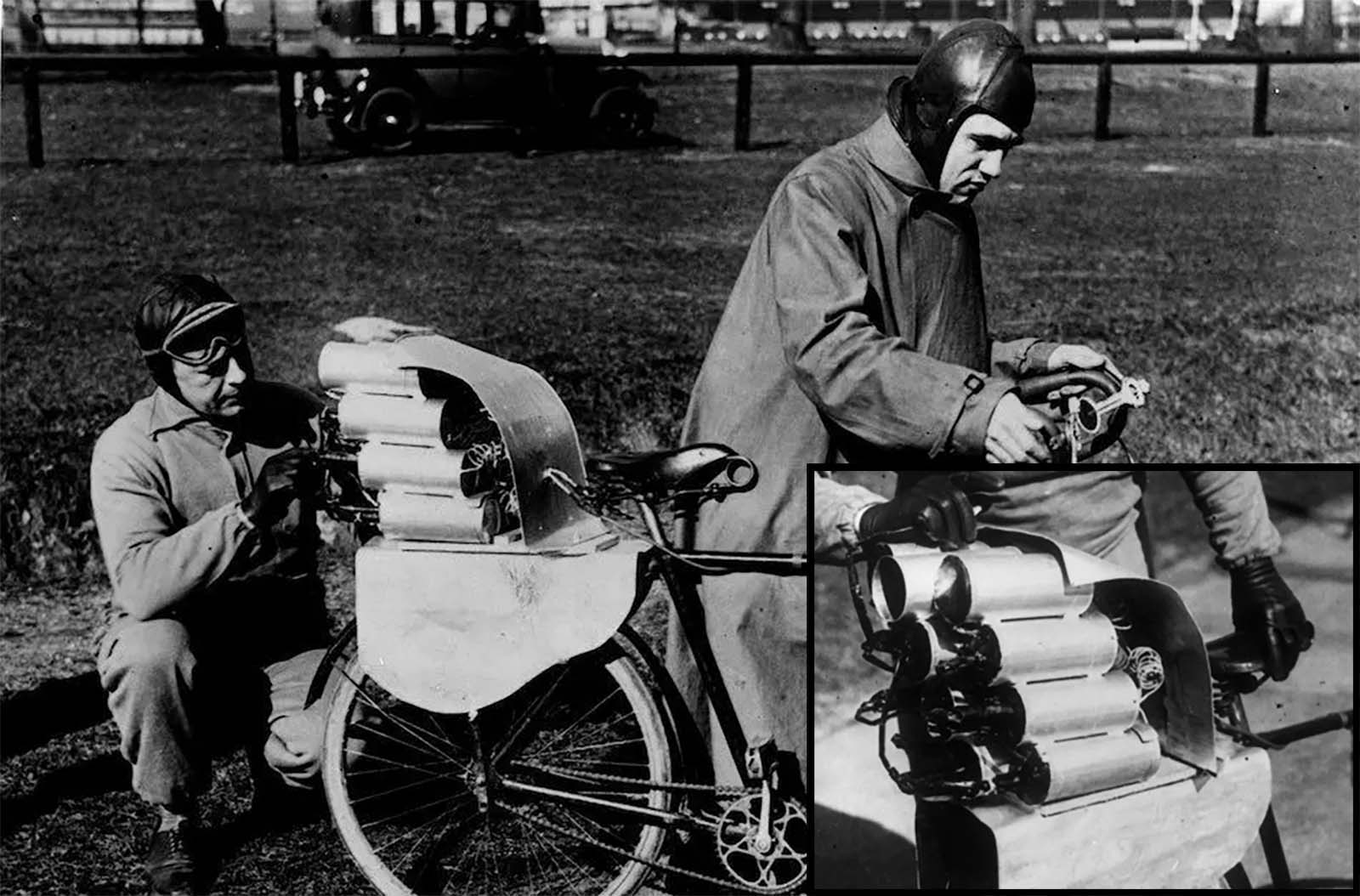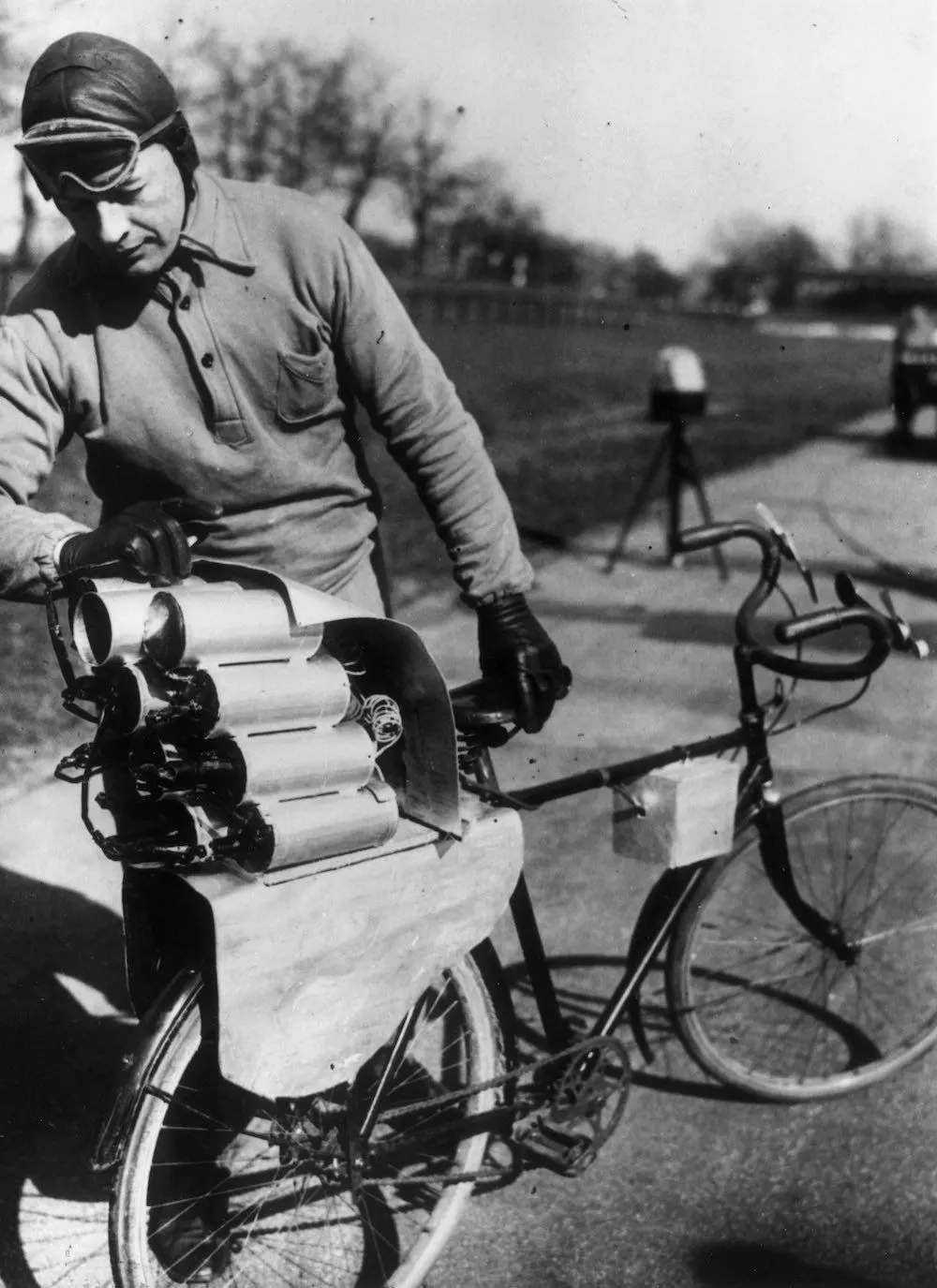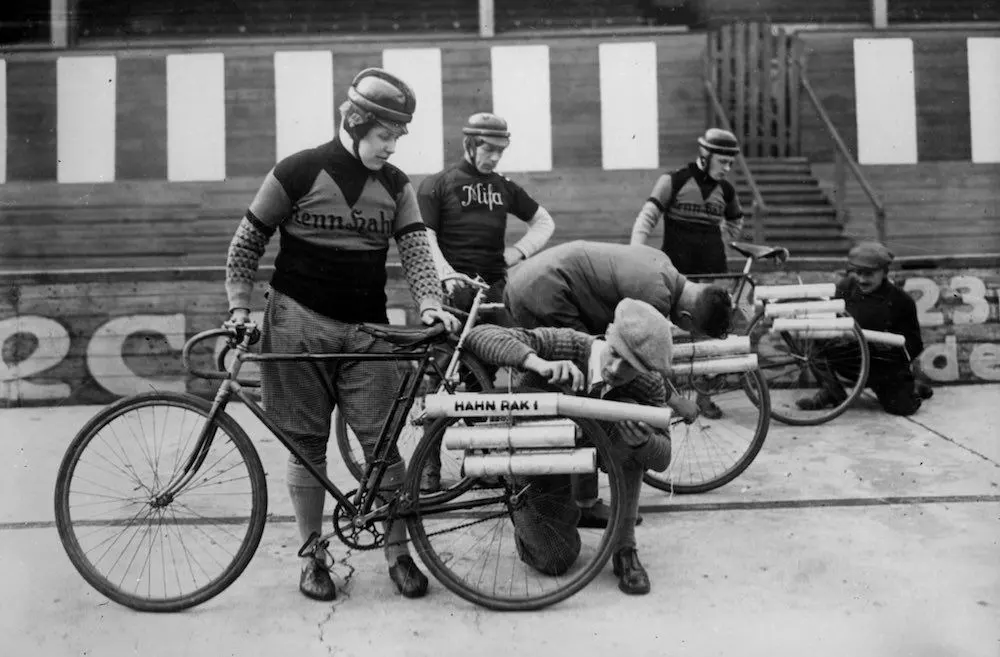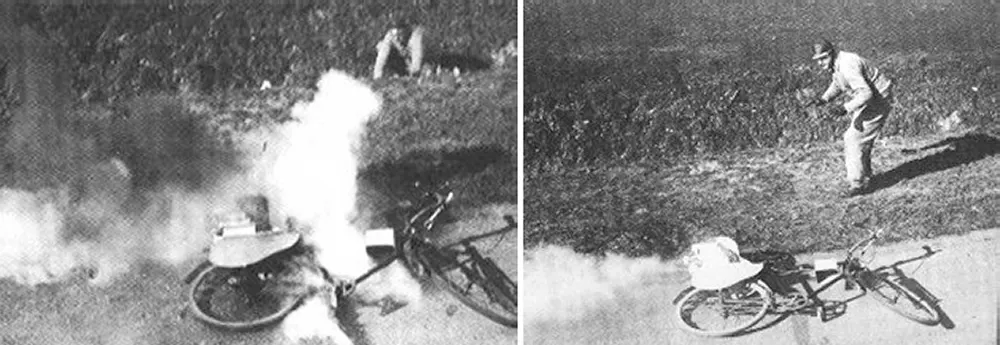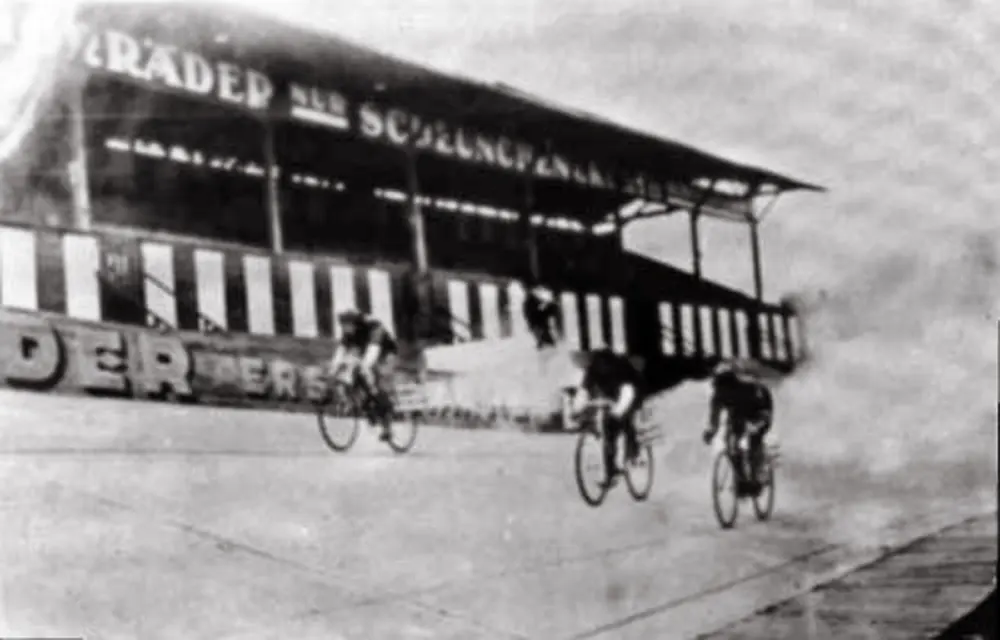However, one of the strangest and least promising applications of rocket propulsion was by using one in a bicycle. In 1931, German engineer Herr Richter attached rockets to his bicycle to create his Raketenrad (rocket-bike). With twelve black powder solid-fuel rockets attached to the rear of his bicycle and a battery hanging from the top tube acting as the ignition system, Richter set off down the Avus race track in Berlin reportedly reaching a top speed of 55 miles per hour before losing control and being thrown from the bicycle. Miraculously, he was not seriously injured. It is not known if Herr Richter made another attempt with the Raketenrad (Rocket Cycle), but German applications of solid-fuel rockets declined considerably in the 1930s due to the promises held with liquid-fuel propulsion being pioneered by Walter and von Braun which led to the German Me-163 Komet, Walter RATO (Rocket-Assist Take-Off) units, and the innovative V-2 ballistic missile. Between World Wars I and II, especially in the 1930s, rocket enthusiasts and rocket clubs were active in Germany, the US, Russia, and other countries. Experimental rockets were designed, tested, and sometimes flown. Some of the experiments used liquid fuel, though solid-fuel rockets were also developed. In the latter, the fuel gradually burned off (as it did in early gunpowder rockets), and the entire fuel container was under pressure, supplying hot gas directly to the De-Laval nozzle. (Photo credit: Mashable / Photographic Agency / Getty Images / Richter Raketenrad by Rob Arndt). Notify me of new posts by email.
Δ Subscribe
